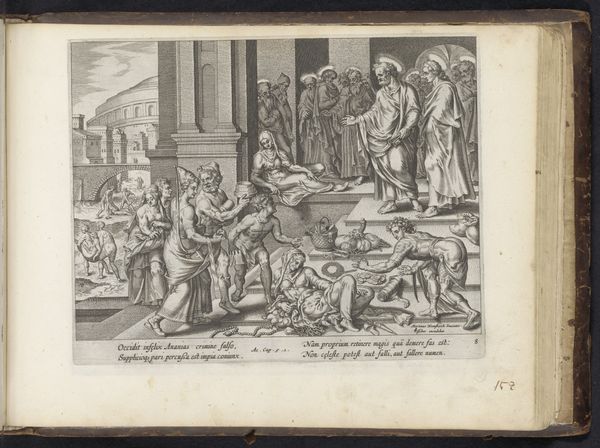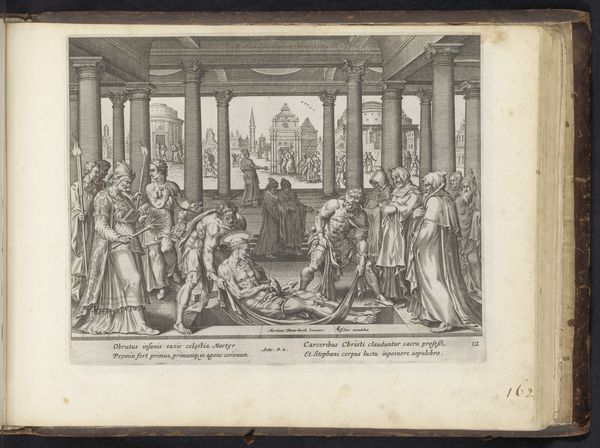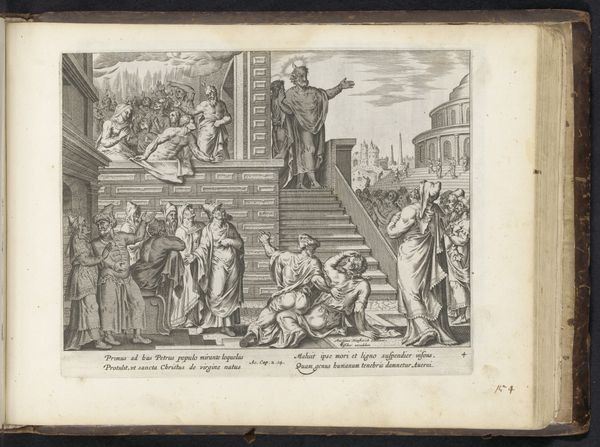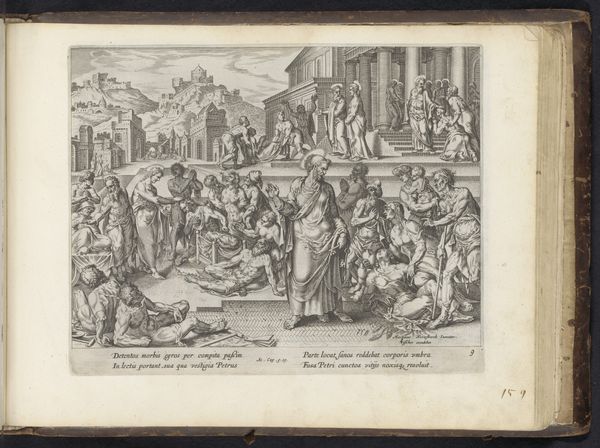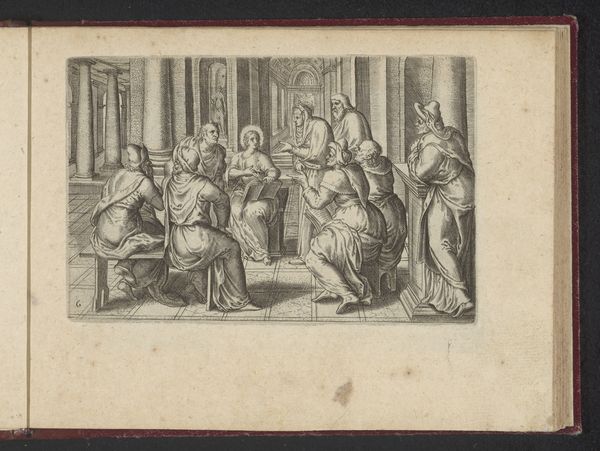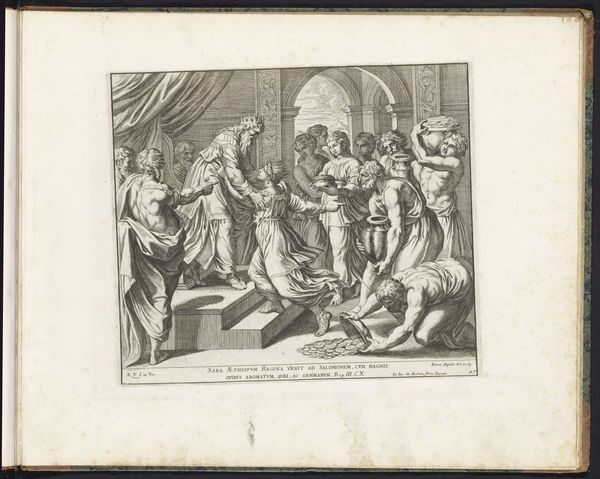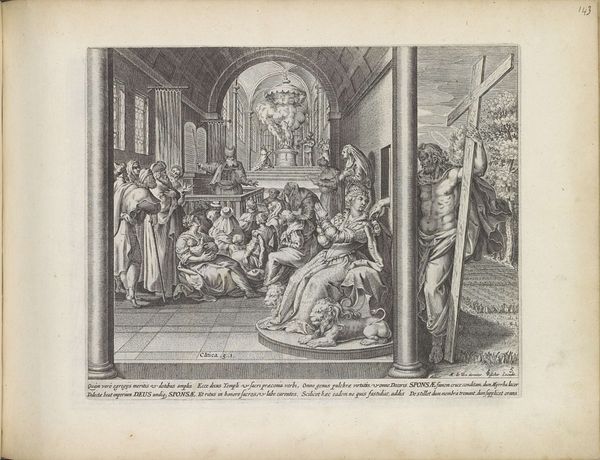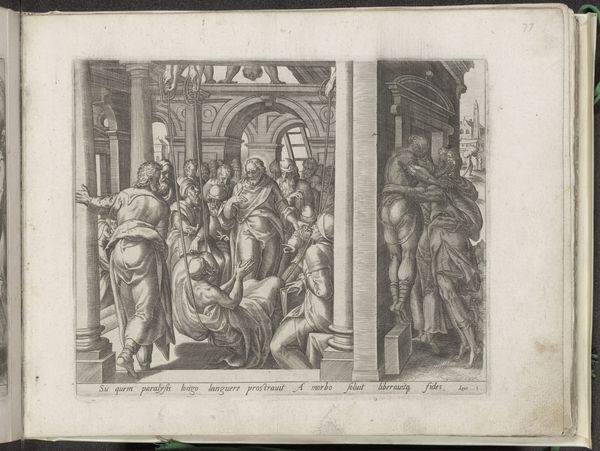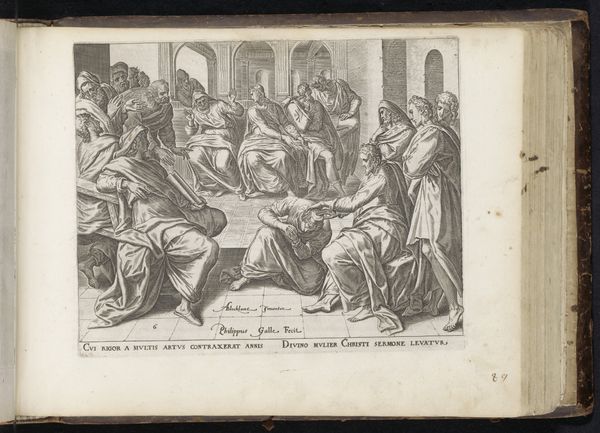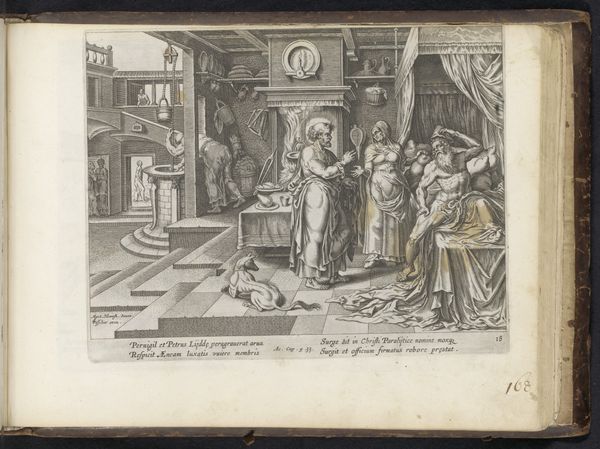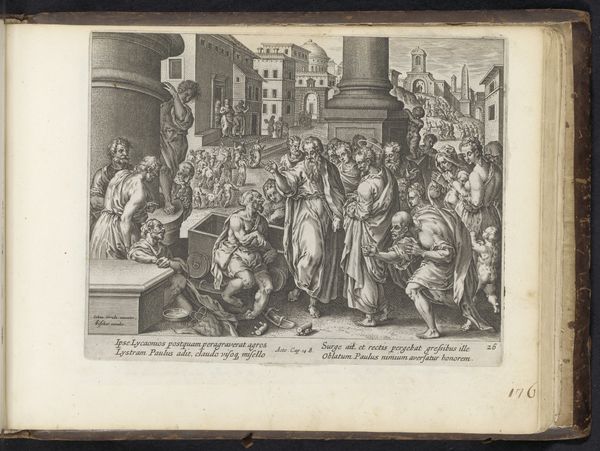
drawing, print, paper, ink, engraving
#
drawing
#
narrative-art
# print
#
figuration
#
paper
#
ink
#
history-painting
#
northern-renaissance
#
engraving
Dimensions: height 209 mm, width 252 mm
Copyright: Rijks Museum: Open Domain
Curator: This print, attributed to Wierix and created sometime between 1569 and 1646, is entitled "Geef ons vandaag het brood dat wij nodig hebben," or "Give us this day our daily bread." It resides here at the Rijksmuseum. Editor: My initial reaction is one of subdued anxiety. The monochrome palette contributes to a sense of austerity, even solemnity. And there's something about the sheer number of people depicted, coupled with their gestures of supplication, that evokes a feeling of collective unease. Curator: Absolutely. This engraving delves into socio-political themes of its time, particularly in relation to religious practice and access to resources. Look at the division between the clergy, who are elevated both literally on the pulpit and through their attire, and the supplicants who are clustered and kneeling. Editor: I notice that, centrally positioned just under the speaker, is a male figure, either dead or perhaps merely gravely ill, laid on a sheet, in line with a woman who has sunken to the floor by the figure. It strikes me how the image subtly depicts not just a general sense of need, but very specific symbols of human suffering. Is this a direct plea for divine assistance in very real, tangible human crises? Curator: Precisely. These recurring visuals signify broader inequalities related to gender, disability and class that shape this historical period. How were marginalised bodies constructed as naturally dependent? How was charity enacted and what hierarchies did that produce? These are questions that spring to my mind when I observe these recurring images. Editor: And it makes you wonder how deliberately placed they were. Note also the contrast between the solid, architecturally rendered forms in the background and the somewhat frantic postures of the crowd. Even the use of ink itself reinforces that sense of a sharp division. A constant contrast seems intended, an effect deliberately amplified by the artistic medium. Curator: The work encapsulates, then, both spiritual devotion and pressing earthly needs of the time. Analyzing the visual symbols within their historical and societal contexts allows us to understand not just the religious narratives, but the intersectional power dynamics. Editor: Indeed. Exploring the cultural weight carried by the figures in "Geef ons vandaag het brood dat wij nodig hebben" has broadened our view beyond simply a religious artwork into a commentary on daily struggles for survival and social justice of a given era. It asks us what is required of those in power towards those seeking relief.
Comments
No comments
Be the first to comment and join the conversation on the ultimate creative platform.
